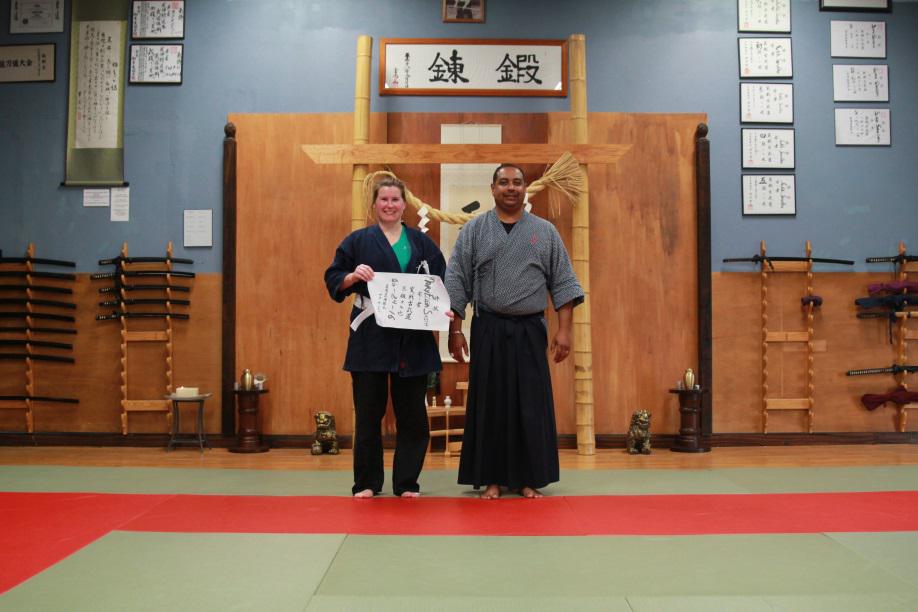
My San Kyu Exam
06/16
By Mary Ellen Smith
San Kyu
Are you ready for your test? “We will see” is my first answer. Closer to the test, the answer just becomes “yes”. Doubt, even if you feel it or could argue the possibility that errors will happen only projects a lack of confidence and after all, how you are presented is how you are perceived.

It is without a doubt impressive to see all the black belts gathered together. Sensei Sukh standing in the middle, surrounded by all those who have attained such levels of skill and character. I refuse to be afraid of their collective might, they are after all the ones trying to raise me up, which is why I moved closer to them to initially stretch out. Everyone with a heightened sense of awareness has a personal space limit and my first test was to invade this space and become comfortable.
The initial line up was a surprise, Sensei and all the black belts took the time to wish us luck. I appreciated everyone’s words of advice, but Sensei’s stood out the most to me. I tried to block out the noise of my mind during the test and occasionally I would remember to refocus on those two words he emphasized, show me your “internal strength”.
Everyone who said your adrenalin would be high at the beginning of the test was correct. Bowing to your uke helps, it is like flipping a switch, suddenly testing is almost like another class to learn from.
Taking the written test was a nice break. It helped my confidence immensely knowing most of what was to be expected. If I would have had to guess at what to study in the manual I probably would not have put a lot of effort into it, since there is so much material.
The last part of the test was Randori. Watching the black belts was fascinating. Seeing the different styles of approach and the varying levels of efficiency in movement is beautiful. To think that I could achieve that is heartening. My goal with Randori was to apply techniques while trying to evade. What am I doing here if what I am learning doesn’t actually work. Thus, I tried different kamae against being attacked.
I found that in Seigan No Kamae everyone punched or kicked to my gut. I can only presume I was very square to them (they were told not to go for head shots so this only applies to the testing arena). Bobi No Kamae seem to make my opponent pause to take stock in my new body position, I find moving and maintaining this position is difficult. The Kamae were you have your palms out as if to say “stop”, outside of being punched or kicked, this kamae seemed to be an open invitation to be grabbed and thrown. I feel that being prepared to bend and get my hips low is important in this Kamae. Hoko No Kamae, I realized positioning oneself to attack from above is stupid in a fight were I’m just to evade and it didn’t make any sense to do this against a weapon. Fighting against the shinai, I tried to use a technique we leaned were you fall at our opponent’s feet on your back, kick your foot out at their hands and then do a back roll away. Either I wasn’t fast enough or my opponent wasn’t committed to cutting me because their hands were always too high for me to reach out with my foot and push it away, perhaps I’m too short, I feel this technique warrants more experimentation. Fighting against the practice yari. I told myself prior to the test that I wanted to get inside the reach of the yari. I completely failed, by this time I’m exhausted and my brain isn’t thinking and I’m falling back on trying to evade. In hindsight, when my opponent happened to begin by smacking the yari on the ground, I wanted to use that as a “go” button to roll forward toward my opponent to find out what would happen since their weapon was on the ground, perhaps next time… if I don’t learn something new.
It’s the morning after the test and as I drink my tea, I raise my cup to the screen and salute the ones who came before and all those on their journey. Thank you for making my test memorable, I look forward to the next.